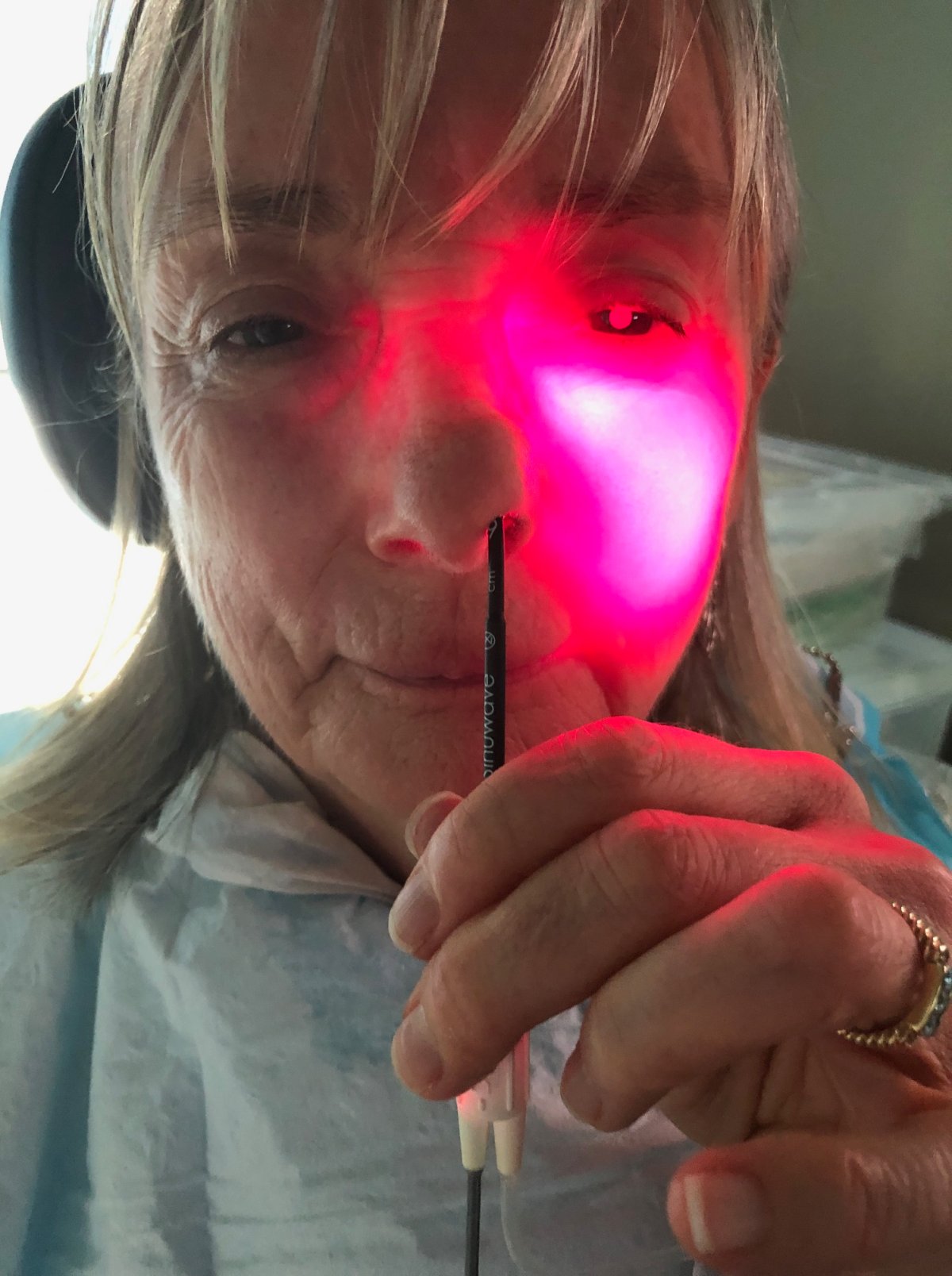A Vancouver doctor is hoping an experimental new treatment involving mucus transplants could help his patients with chronic sinus problems.

Dr. Amin Javer, director of the Sinus Centre at St. Paul’s Hospital in downtown Vancouver, recently began the first phase of a study to treat patients with chronic rhinosinusitis that haven’t responded to any other treatments.
He’s hoping that in the second phase, he will be able to transfer mucus from a healthy individual into a sick one and thereby restore the bacterial balance inside the sick person’s sinus — hopefully making them well again.
It’s just a hypothesis at this point, but the same principle has been used for years to treat persistent C. difficile infections with a “fecal transplant” — poop donated from a healthy person. The donated fecal matter contains a healthy mix of bacteria to replace the unbalanced bacteria inside someone else.
WATCH: Researchers helping to relieve symptoms of sinusitis
“We all have bacteria in our sinuses,” said Javer. Most of the time, this mix of bacteria doesn’t cause any problems. But for his chronic rhinosinusitis patients, “the microbiome alters, and they start forming pathogenic biofilm,” the doctor explained.
This may cause a variety of symptoms, from headaches, pressure, chronic fatigue and post-nasal drip to even adult-onset asthma, he said.
“These are very sick patients.”
Rhinosinusitis
Rhinosinusitis is a relatively common condition in Canada, affecting about 5.7 per cent of the female population and 3.4 per cent of the male population, according to a 2003 study.
Pat Taylor was diagnosed with chronic rhinosinusitis about four and a half years ago. To help solve the problem, she’s had two surgeries and tried experimental treatments that involve receiving medications directly into her sinuses — but nothing has had lasting results.
“I felt like an elephant was sitting on my face all the time,” she said. Her nose was constantly plugged with a yellow mucus that was thick like “peanut butter” and could only be removed by a medical specialist.
The 66-year-old had headaches, eye pressure, facial pressure and even pain in her teeth at times, she said. Taylor also developed asthma and seasonal allergies as a result of her condition. She travelled from her Victoria home to Vancouver every four to six weeks for treatment, or as often as weekly if she was having trouble.
As a result of her condition, Taylor enrolled in Javer’s study because, she said, “I’m desperate.”
“My life was taken away. I used to be a very active person and travelled and all sorts of things. And that‘s very, very limited now.”
As a participant in the first test group, Taylor went in to have treatment with “blue light.” Javer inserted a catheter into her sinus and ran a special blue light into it to “zap” the bacteria.
“We sit there with this up our nose for eight minutes. They put a timer on. And in that time, it is killing anything in there like virus, bacteria and fungus,” Taylor said.
A week after her first treatment, her sinus has already improved, she said.
Transplants
But that’s just the first group of patients. The second experiment, on which Javer is still waiting for Health Canada to give final approval, will see a group of patients undergo the blue light treatment to kill their sinus bacteria and then receive a transplant of mucus from a healthy donor.
This donor will come from the patient’s immediate family and be carefully screened for diseases like HIV and hepatitis. Then doctors will inject saline through their nose into their sinus and suck everything out. Then, they insert the solution into the freshly sterilized patient’s sinus.
There will be a total of about 80 patients in the trial, counting both groups, said Javer. The results from the transplant patients will be compared to the results from the group that got blue light treatment only. To the best of his knowledge, no other study has used exactly this procedure.
He’s hoping to be able to start soon after the proposed experiment gets final approval and perform his first transplant in April. Javer estimates that he will have preliminary results in about a year.



Comments